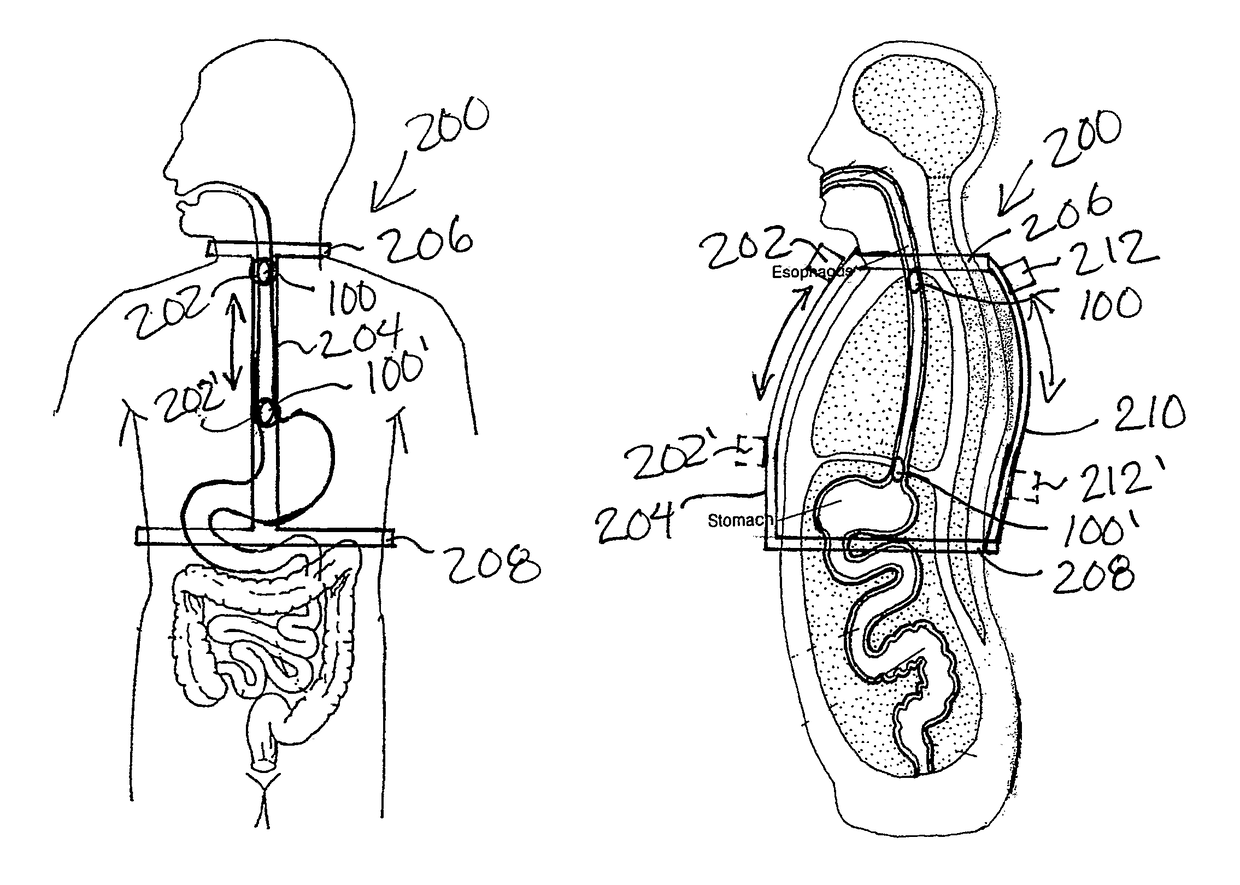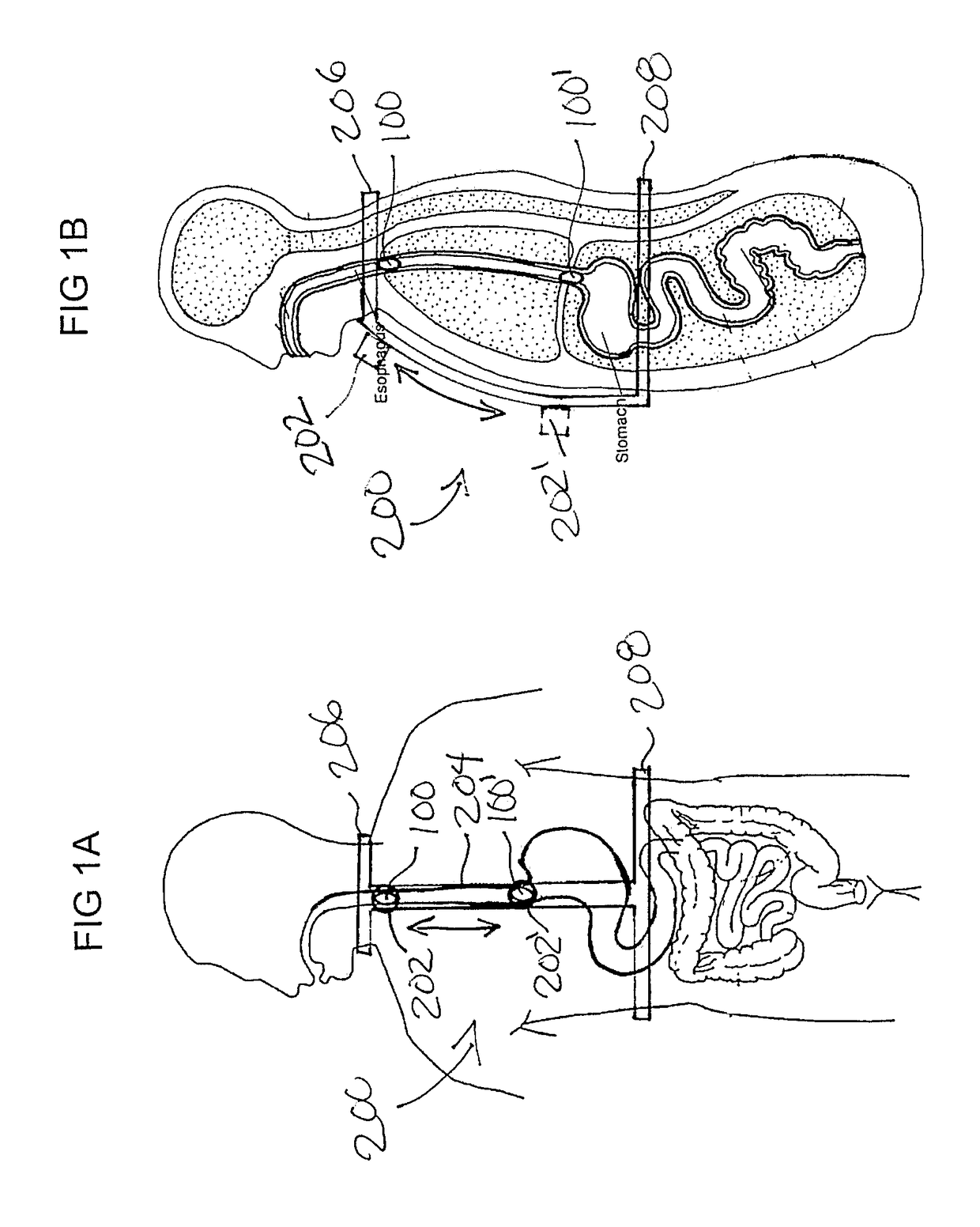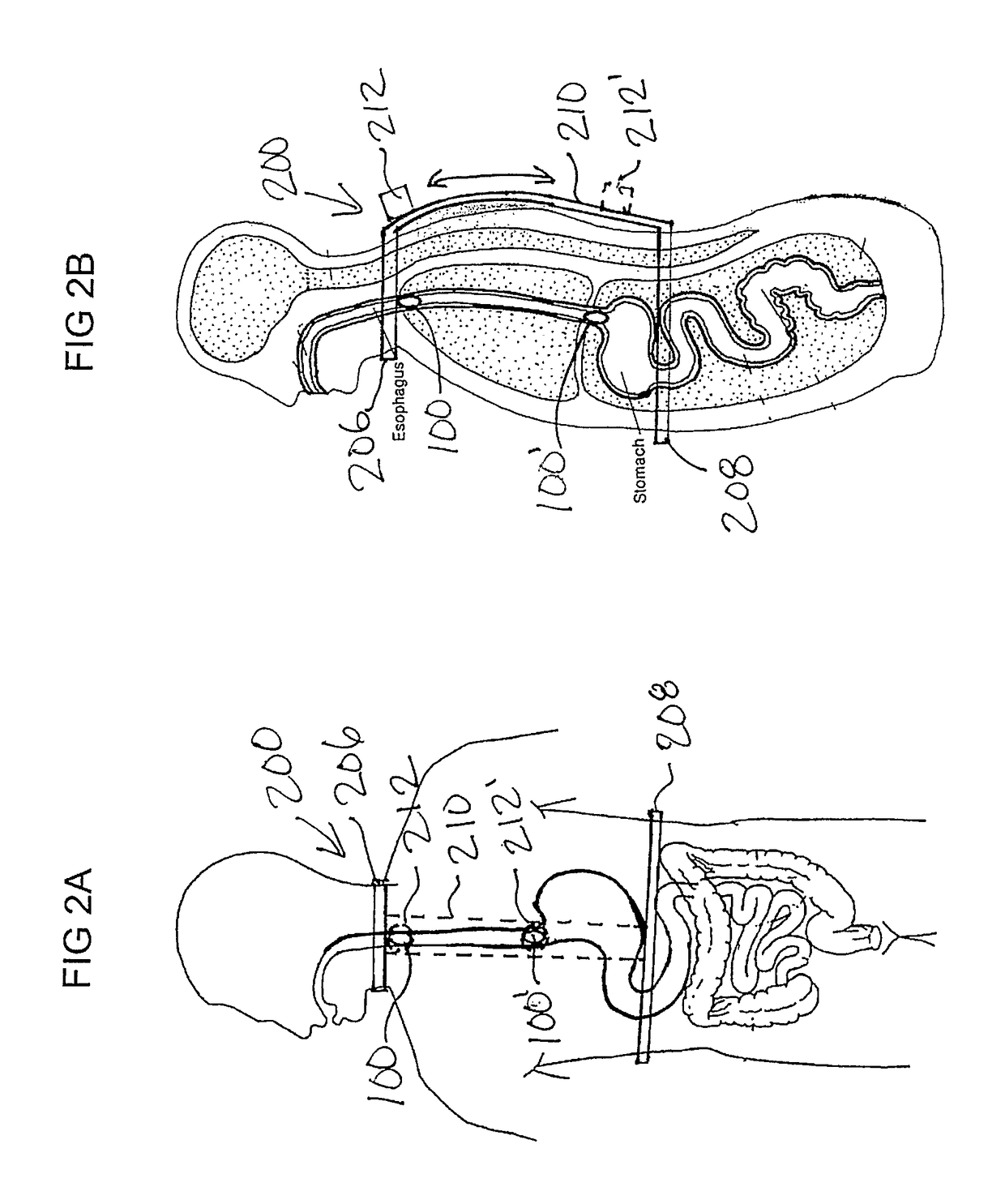Apparatus and methods for capsule endoscopy of the esophagus
a technology of endoscopy and esophagus, which is applied in the direction of dianostics using fluorescence emission, sensors, diagnostics using spectroscopy, etc., can solve the problems of inability to completely evaluate the efficacy of measures, affecting the success of studies, and affecting the quality of life of patients
- Summary
- Abstract
- Description
- Claims
- Application Information
AI Technical Summary
Benefits of technology
Problems solved by technology
Method used
Image
Examples
first embodiment
[0212]FIGS. 1A and 1B show the apparatus of the invention in use for performing esophageal capsule endoscopy on a patient. The apparatus includes an ingestible endoscopy capsule 100 and an external capsule positioning system 200. The endoscopy capsule 100, which will be described in greater detail below, includes a magnetically attracted element, which may be a permanent magnet, an electromagnet or a magnetically attracted ferritic material. The external capsule positioning system 200 includes at least one external magnet 202, which may be a permanent magnet or an electromagnet, and means for positioning the external magnet 202 with respect to the patient's anatomy.
[0213]In one particularly preferred embodiment, the means for positioning the external magnet 202 includes a track 204, which is configured to be positioned over the esophagus on the ventral or anterior surface of the patient's torso. The track 204 is approximately linear when viewed from the anterior of the patient, as s...
second embodiment
[0224]FIGS. 2A and 2B show the apparatus of the invention where the external capsule positioning system 200 is fastened to the patient with a track 210 carrying an external magnet 212 positioned over the esophagus on the patient's dorsal or posterior side.
third embodiment
[0225]FIGS. 3A and 3B show the apparatus of the invention where the external capsule positioning system 200 includes an anterior track 204 carrying a first external magnet 202 and a posterior track 210 carrying a second external magnet 212. The anterior track 204 and posterior track 210 are positioned approximately parallel to one another by the collar 206 and the waist belt 208. The first external magnet 202 and the second external magnet 212 are preferably positioned with opposite poles of the magnets facing toward the patient. The use of two external magnets in this configuration helps to center the endoscopy capsule 100 within the esophagus and minimizes the bias of the endoscopy capsule 100 to follow the anterior or posterior wall of the esophagus. In addition to moving the endoscopy capsule 100 up and down the esophagus, the two external magnets can also be used to selectively aim the camera of the endoscopy capsule 100, as will be explained further below.
[0226]Preferably, the...
PUM
 Login to View More
Login to View More Abstract
Description
Claims
Application Information
 Login to View More
Login to View More - R&D
- Intellectual Property
- Life Sciences
- Materials
- Tech Scout
- Unparalleled Data Quality
- Higher Quality Content
- 60% Fewer Hallucinations
Browse by: Latest US Patents, China's latest patents, Technical Efficacy Thesaurus, Application Domain, Technology Topic, Popular Technical Reports.
© 2025 PatSnap. All rights reserved.Legal|Privacy policy|Modern Slavery Act Transparency Statement|Sitemap|About US| Contact US: help@patsnap.com



